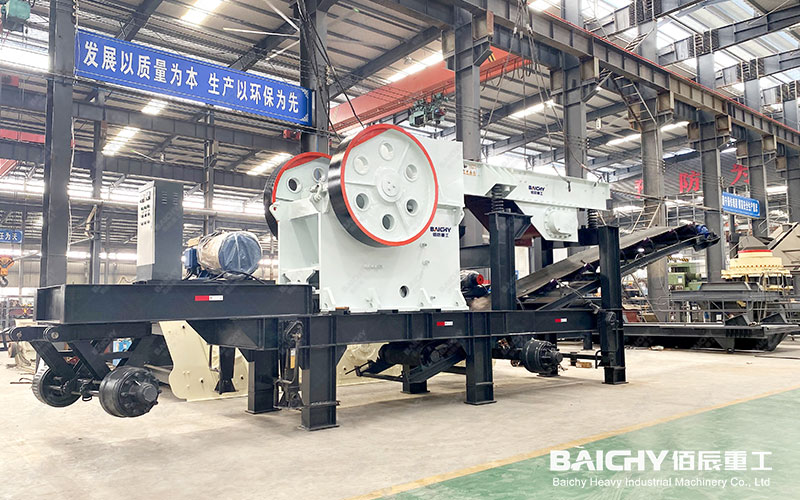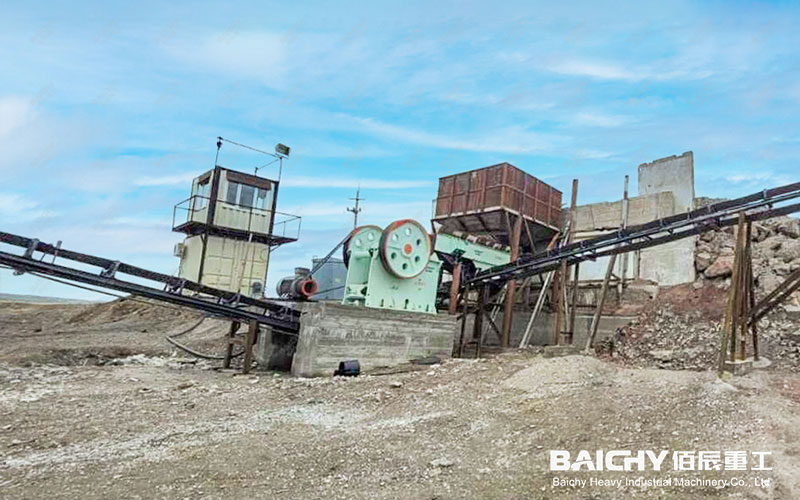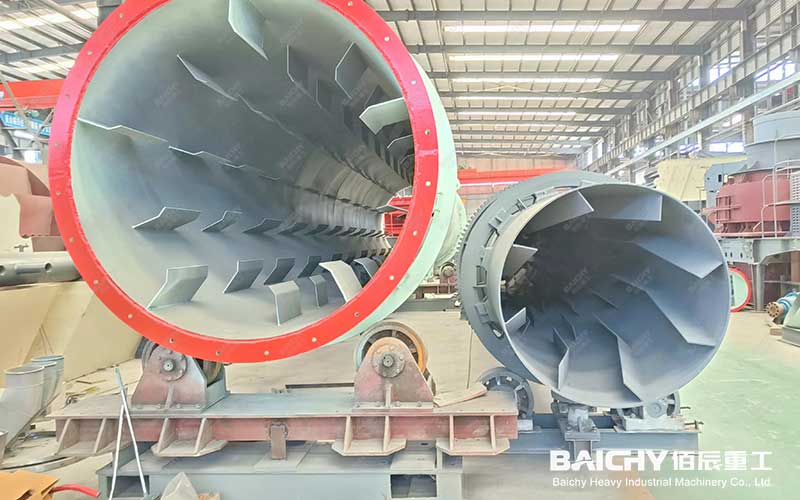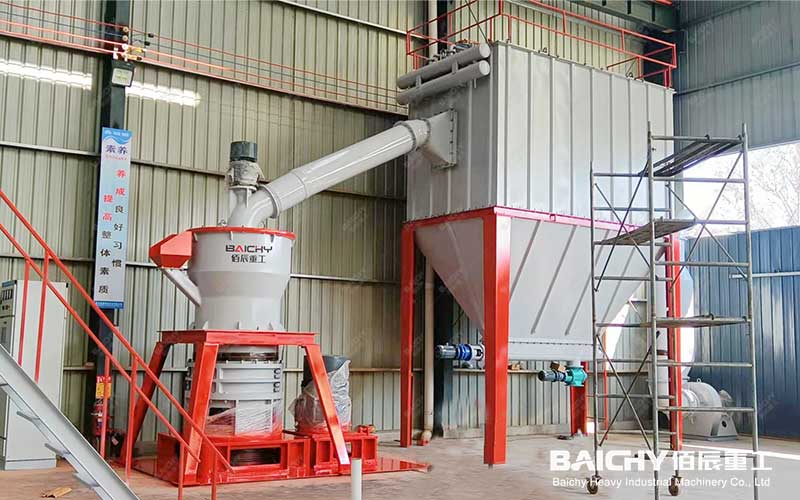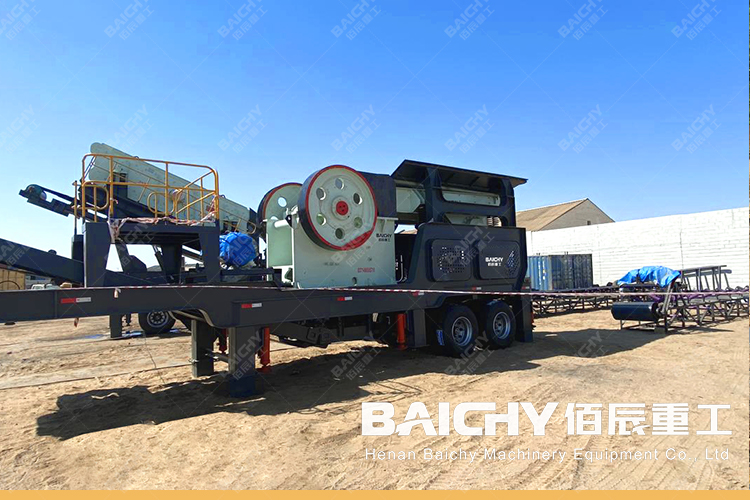
Mobile jaw crushers and impact crushers are very common configurations in Baichen Machinery’s mobile crushing station series. It is composed of 2 mobile crushing stations: a mobile jaw crushing plant and a mobile impact crushing plant.
The mobile jaw crushing station performs primary crushing operations, and the mobile impact crusher performs secondary crushing and screening operations. The two independent mobile stations form a complete crushing production line. Its strong mobility can be used for continuous special operations, and it is easy to operate. Stable operation and flexible configuration.
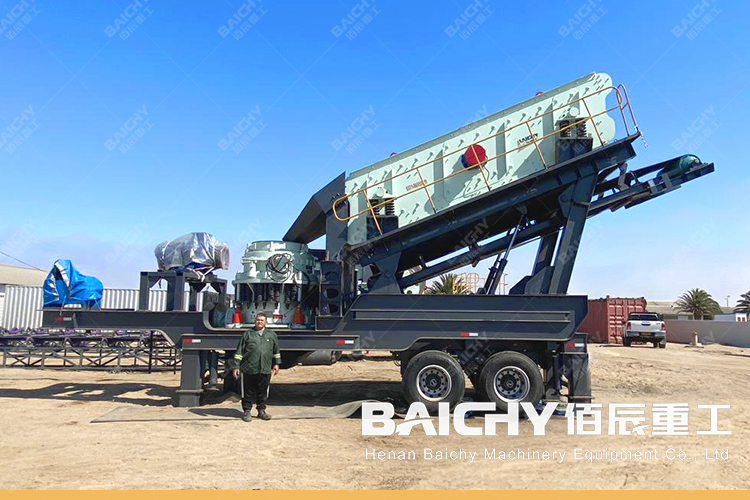
What is the difference between a mobile jaw crusher and a mobile impact crusher?
There are obvious functional differences between mobile jaw crusher and mobile impact crusher, which are mainly reflected in the following aspects:
1. Crushing principles and mechanisms:
• Mobile jaw crusher: It uses the jaw plate to squeeze, shear, and bend the materials to break them. The jaw plate is divided into a movable jaw and a fixed jaw. The movable jaw is driven by an eccentric shaft to perform reciprocating motion and forms a crushing cavity with the fixed jaw. The material is squeezed and crushed in the crushing cavity.
• Mobile impact crusher: It uses the blow bar on the high-speed rotating rotor to impact and crush the materials. After being hit by the blow bar, the material rebounds to the impact plate and is crushed again. After repeated crushing many times, the material reaches the required particle size.
2. Material adaptability:
• Mobile jaw crusher: suitable for crushing materials of various hardnesses, such as limestone, river pebbles, granite, basalt, etc., especially suitable for crushing materials with a compressive strength not exceeding 320MPa.
• Mobile impact crusher: suitable for crushing medium hardness or soft materials, such as limestone, river pebbles, construction waste, etc. Since the crushing principle of impact crusher is impact crushing, its crushing effect may not be as good as that of jaw crusher for materials with higher hardness.
3. Finished product particle size and shape:
• Mobile jaw crusher: The particle size of the finished product is relatively large and the particle shape may not be uniform, but the particle size of the finished product can be controlled by adjusting the jaw spacing and rotation speed.
• Mobile impact crusher: The finished product has finer particle size, round and full grain shape, and uniform particles. It is suitable for occasions with high requirements on the finished product particle size.
3. Equipment structure and maintenance:
• Mobile jaw crusher: The structure is relatively simple and easy to maintain, but the jaw plate wears quickly and needs to be replaced regularly.
• Mobile impact crusher: The structure is relatively complex, but it is easy to maintain. The plate hammer and impact plate wear slowly and have a long service life.
4. Application areas:
• Mobile jaw crusher: widely used in mining, construction, highways, railways and other fields, especially suitable for large stone quarries and construction waste disposal sites.
• Mobile impact crusher: also widely used in mining, construction, highways and other fields, especially suitable for crushing construction waste, waste concrete and other materials.
To sum up, there are obvious differences between mobile jaw crusher and mobile impact crusher in terms of crushing principle, material adaptability, finished product particle size and shape, equipment structure and maintenance, and application fields. Users need to make their selections based on their actual needs and material characteristics.




